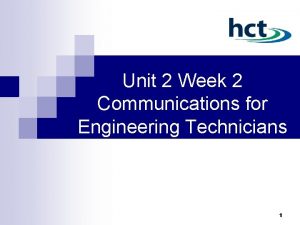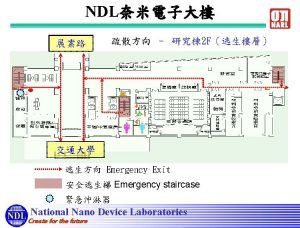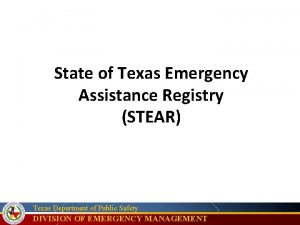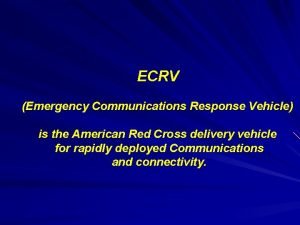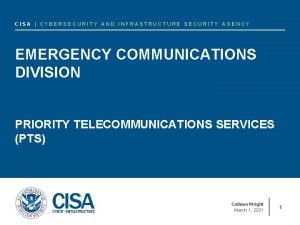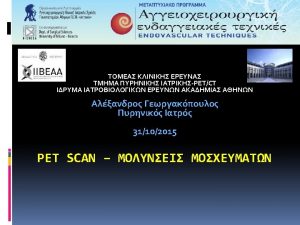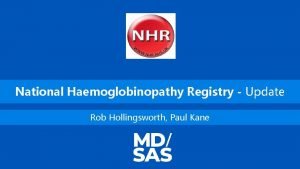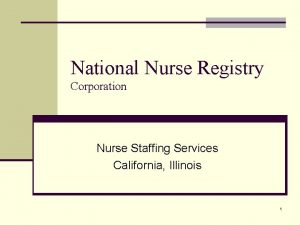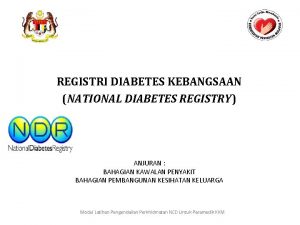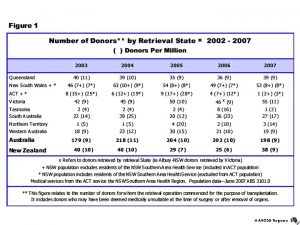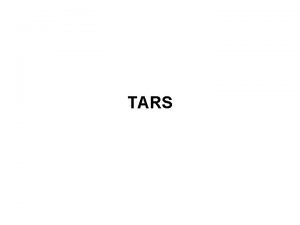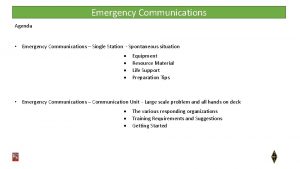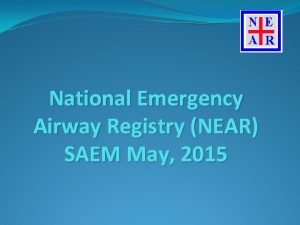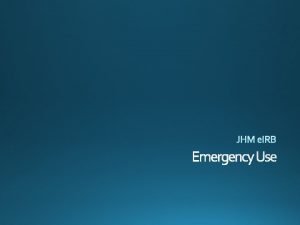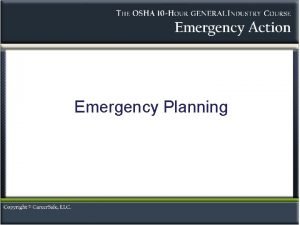NATIONAL REGISTRY FOR EMERGENCY COMMUNICATIONS TECHNICIANS NRECT AN








- Slides: 8

NATIONAL REGISTRY FOR EMERGENCY COMMUNICATIONS TECHNICIANS (NRECT) AN ALL INCLUSIVE APPROACH BY FIRST RESPONDERS NATIONAL PUBLIC SAFETY TELECOMMUNICATIONS COUNCIL Committee Meeting June 14 – 15, 2010 Alexandria, VA

History • SAFECOM recognized an unmet need – Trained personnel outside of dispatch centers to help coordinate communications • Formed working group of SAFECOM ERC members and others – Equal voices from different interest groups • Class has been very successful • Identification of problems beyond scope of original group – Credentialing/certification 2

Current Status • COML training has been ongoing for past 24 months • Students are starting to complete task books • Task book uncertainties – Individuals unsure of where to submit completed materials • States exhibiting hesitation to become a certifying entity • Currently, no national COML registry 3

Registry Proposal • Drafted by individuals from original COML working group • Produced ‘starter’ charter/bylaw documents based off of similar entities (including pieces from many of the associations here) • Started promoting to practitioners • Attempt has been to get the discussion started • Currently reaching out to associations for support and feedback 4

Strengths • • Institutionalization of SAFECOM model/values Practitioner emphasis, but not limited to practitioners – • Singular focus on certification/credentialing of COML/COMT and associated programs, designed in a way to support the implementation, updating, and sustainability of the COML/COMT initiatives – – – • Equal voice: all groups are on equal standing at the governance level Self supporting – • No internal competition with other projects No competition with training providers Intent to remain involved in other aspects of COML effort, but ONLY focused on certification/credentialing One level of governance – • All-inclusive, like SAFECOM, through governance and involvement • Avoids silos by including diverse group of practitioners • More than half of the governing body must be active practitioners from the emergency response community Funded through LSU-SDMI as part of their mission Third party (academic) approach – – Acts as a ‘ground truthing’’ or vetting to the level of training provided by others Ensures a standard level of proficiency within industry, as recommended by practitioners 5

University Partnership • • • Organizational oversight by representative Board Advisory role Defines policies and principles of organization based on those of similar non-profit agencies Provides content for credentialing exams Continuous industry research Verifies completion of COML task books and any other prerequisite documentation prior to certification Provides funding Provides home and operational oversight Issues credentials and diplomas Maintains registry database 6

Web site/On-line interaction 7

In Conclusion… • Extension of SAFECOM efforts and principles – Focus on the ‘field’ (practitioners) – All are equal voices – All have equal standing • Further enhancement of current COML/COMT and associated programs – Singular focus on implementing, updating, and sustaining the COML/COMT initiatives 8
 Unit 2 communications for engineering technicians
Unit 2 communications for engineering technicians National emergency communications plan
National emergency communications plan Texas department of public safety
Texas department of public safety Emergency communications response vehicle
Emergency communications response vehicle Cisa emergency communications division
Cisa emergency communications division National oncologic pet registry
National oncologic pet registry National haemoglobinopathy registry
National haemoglobinopathy registry Nurse registry agency
Nurse registry agency Clinical audit kkm
Clinical audit kkm
